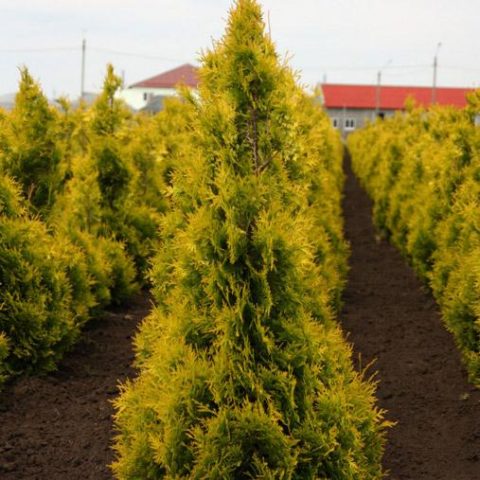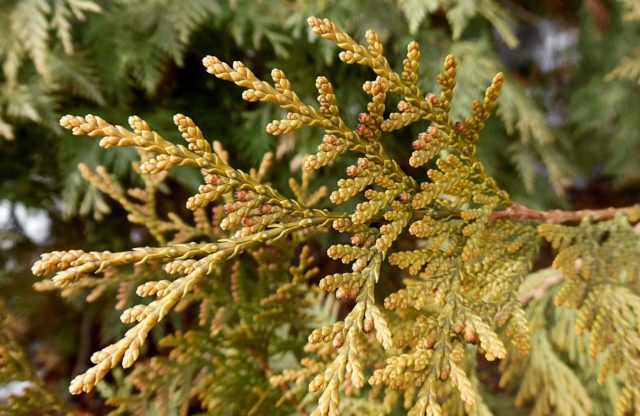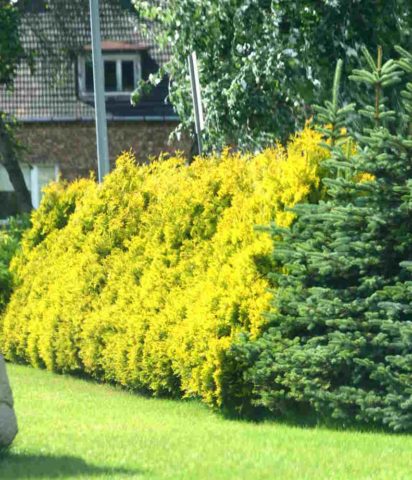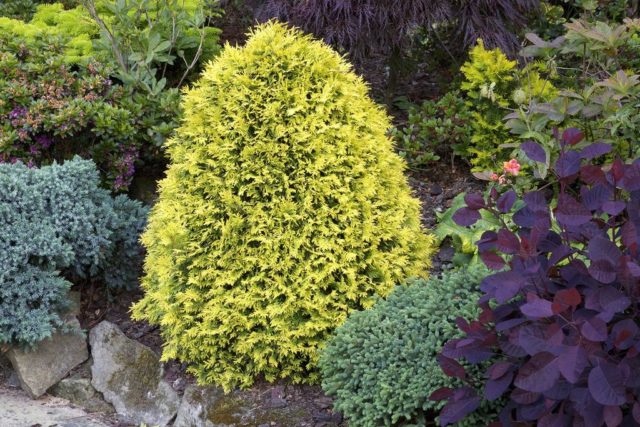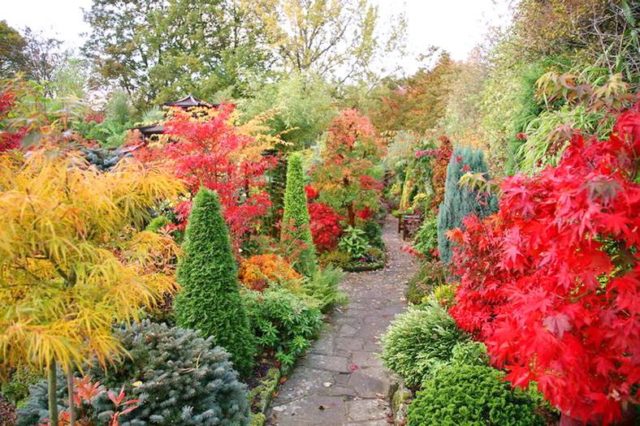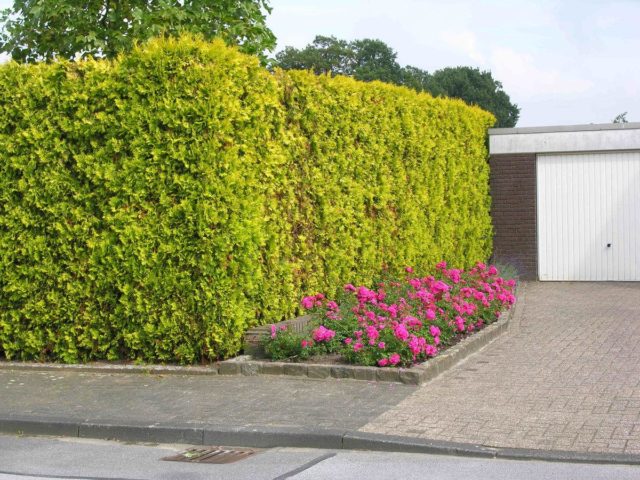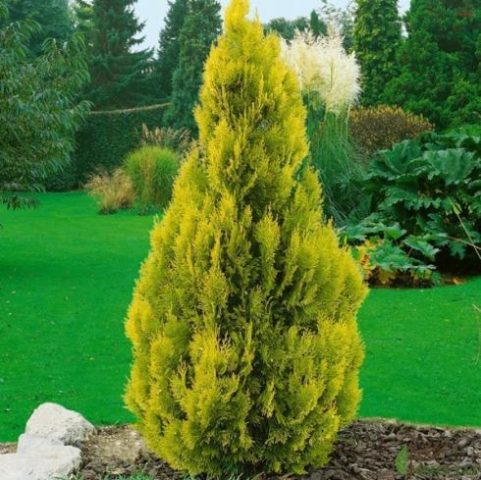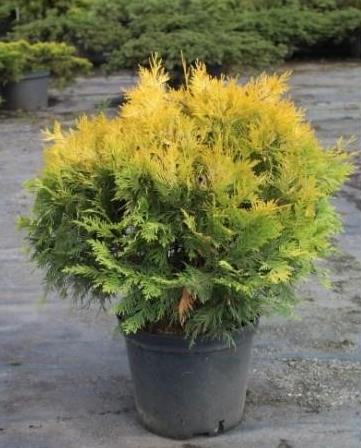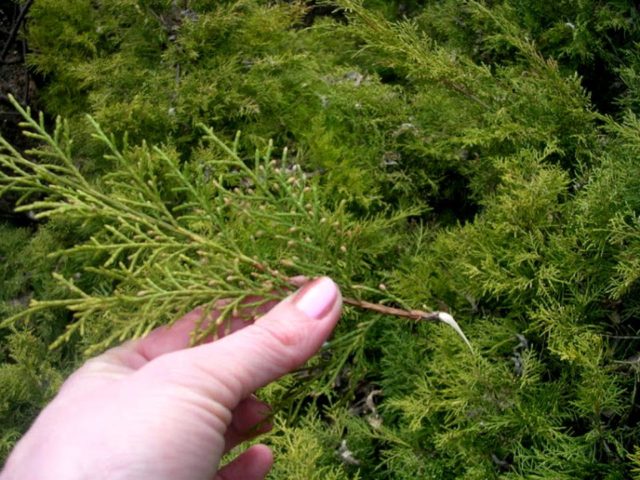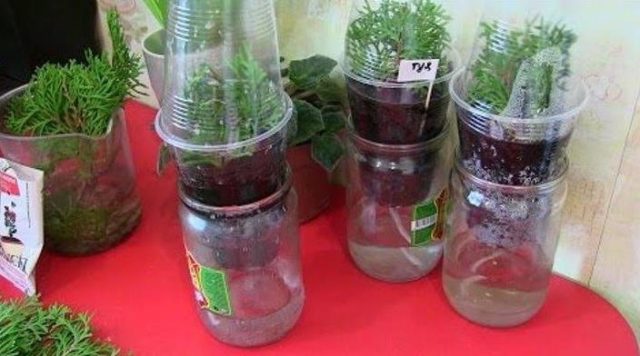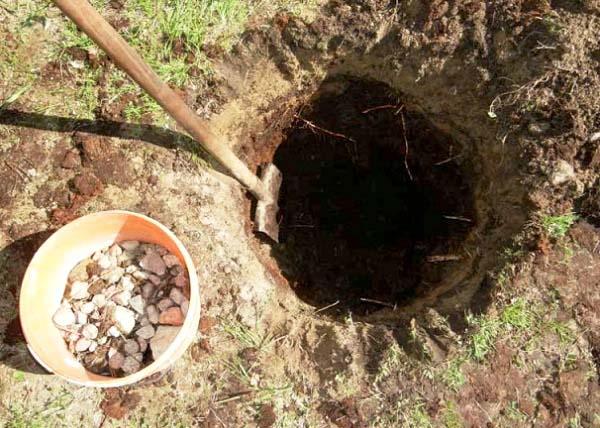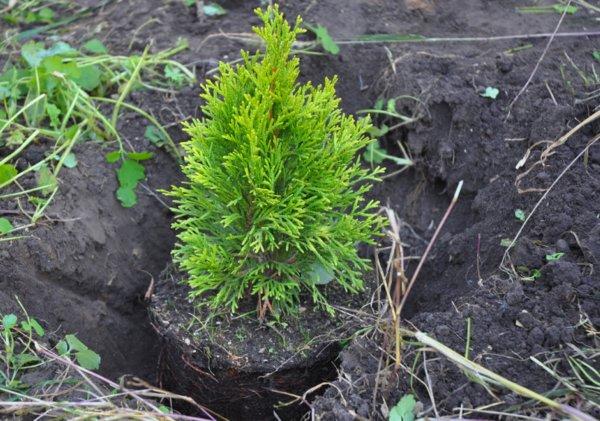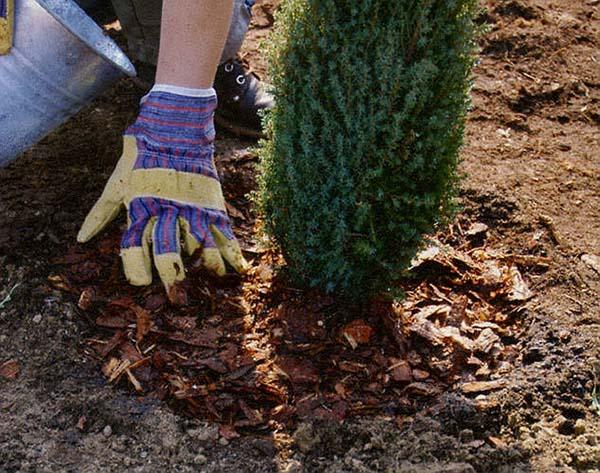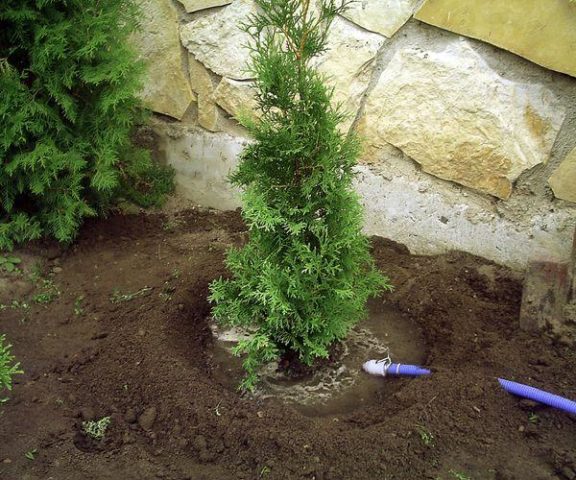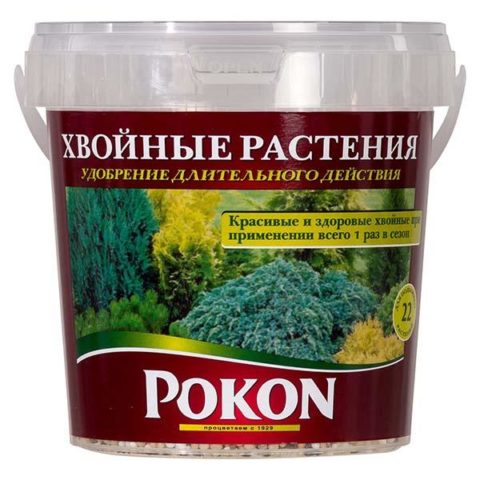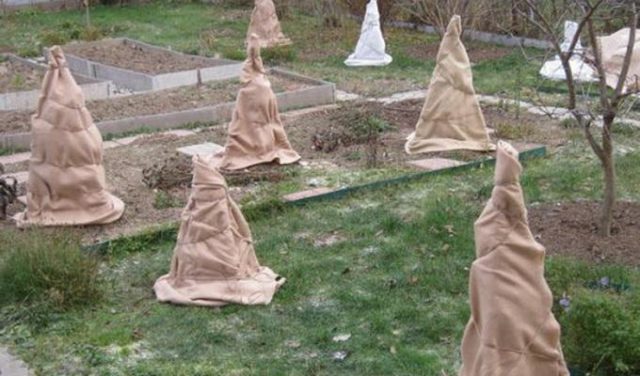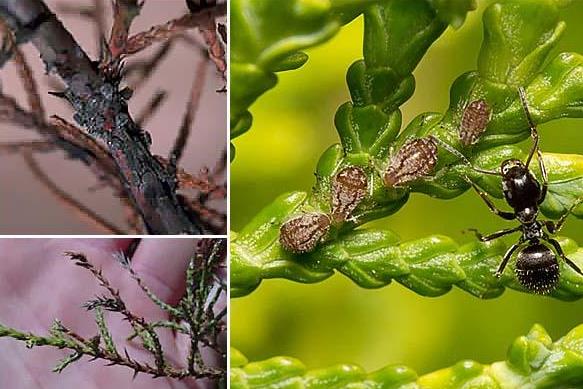Content
In works that describe the life of the Indians of America and Canada, you can find a mention of the "white cedar of life." We are talking about the western thuja, many species of which grow on this continent. Nowadays, the coniferous tree can be found all over the world. Thuja Sunkist is just one of many varieties of a popular plant in landscape design.
Description of western thuja Sunkist
Thuja western belongs to the Cypress family. In the wild, trees can reach a height of 20 m. Description Tui Sankist is similar to the variety Luteya. It was this ephedra that was used for the Sankist breeding.
"Bunch of the sun" - this is how the name of this low evergreen tree with bright golden needles is translated from English. In the garden, thuja Sankist grows up to 2 m. Rare specimens can reach no more than 5 m at the age of ten. A slow-growing tree, with proper care, adds a little more than 5 cm per year in height and width.
- Thuja Sankist branches are vertical, slightly twisted.
- The shape of the crown is pyramidal.
- The color of the scaly needles changes from light yellow to bronze, according to the seasons.
- The root system of the thuja is located in the upper layer of the soil.
- The bark is smooth brown at a young age, and as the tree ages, it flakes off in even stripes.
- Greenish flowers are hardly visible in the dense crown.
- Reddish cone fruits contain several seeds.
The needles and wood of thuja western Sankist has a pleasant coniferous aroma. But, unlike pine and spruce, resin on the bark of the ephedra does not stand out.
The use of thuja Sunkist in landscape design
A low-growing evergreen tree looks spectacular all year round. The golden color of the needles goes well with green and red shrubs and ornamental plants in the alpine hills.
On sites offering landscape gardening services, you can find many photos and descriptions of thuja Sankist in various decoration options.
Several varieties of thuja with different colors of needles can be planted in the front area of the garden. This will become a real decoration of the alley or rockery.
A hedge from the western thuja Sankist can be grown around the site or covered with plantings of outbuildings. Western thuja tolerates haircut well for crown formation. A dense woven hedge made of golden thuja Sankist will not only create the necessary decorative effect, but also protect the site from the penetration of animals.
Western thuja Sunkist, as shown in the photo, goes well with ground cover plants. And the frame made of stones will give the evergreen tree a special flavor.
The unpretentious decorative ephedra can be grown in containers. Miniature young trees of thuja Sankist are used in landscape design.
Sapling photo:
Breeding features
Western thuja is propagated by seeds and cuttings. But, given that thuja Sankist is an artificially bred variety, varietal characteristics can be lost with the seed method of propagation of the crop. For cultivation of thuja western Sankist it is better to use the vegetative method.
Propagation by cuttings
The planting material of the western thuja Sankist is harvested in late autumn. Cuttings are rooted at a temperature of about 25 degrees Celsius.For the development of the root system of thue Sunkist, high air humidity is required. Experts advise using indoor greenhouses or plastic bags for rooting cuttings.
Thuja branches for reproduction should be cut off with a small piece of bark (heel) with a sharp knife so as not to damage the mother tree. The length of the workpiece should be about 15 cm. After that, it is necessary to remove the needles and small lower branches to the middle of the cutting.
The soil for rooting thuja western must be disinfected. You can heat the substrate in the microwave. Boiled water should be used for watering.
To root one cutting of thuja, it takes about a glass of a mixture of sand and turf. In order to increase moisture and air permeability, it is recommended to add vermiculite or foam crumbs. The soil should be moderately moist.
The western thuja stalk must be immersed in the substrate and the bag should be tightly closed. In this state, rooting takes about a month. You need to hold the bag with thuja on a light window or use a backlight. The duration of daylight hours for the rapid germination of western thuja is at least 13 - 14 hours.
It is not worth opening the bag while the thuja is rooting. The overgrown roots are perfectly visible.
The seedling should be transplanted into a pot as soon as the root system has developed. For the further cultivation of thuja Sankist, you can mix fertile sod soil and coarse sand in a ratio of 2 to 1.
Algorithm of actions:
- Place drainage on the bottom of the pot.
- Fill up some of the soil.
- Set the rooted thuja stalk vertically.
- Sprinkle soil around the circumference of the container.
- Water and spray the plant.
- Place in a plastic bag and cover tightly for 2 - 3 days.
A thuja seedling can be opened no earlier than after 3 days. Carefully teach the plant to reduce moisture.
Landing rules
When planting a western thuja, it should be remembered that an evergreen tree will grow in one place for more than 10 years. It will be impossible to transplant an adult plant. The root of the western thuja Sankist can grow up to a meter deep.
Recommended timing
You can plant thuja in open ground from spring to autumn. But each landing date has its own characteristics.
Landing in summer
When planting thuja Sankist in summer in open ground, it must be remembered that the roots of the plant are very sensitive to drying out. Therefore, you need to prepare the planting hole in advance and transplant the tree as soon as possible. It is recommended to do this while the air temperature does not exceed 20 degrees Celsius. It is also necessary to shade the young tree in order to avoid drying out of the roots and burns of the needles.
Landing in the fall
The main problem of the autumn planting of thuja is soil subsidence. Even a healthy seedling is not yet able to stay in the soil due to the weakness of the root system. Therefore, when planting a thuja in the fall, props should be installed so that the tree is not damaged by wind or melting snow.
Spring planting
The optimal time for planting western thuja in open ground is March-April. This period may differ slightly in different climatic zones. It is important to have time to plant the thuja before the sap flow begins.
At this time, active growth of shoots begins in all conifers. Therefore, thuja planted in spring takes root more easily. Before winter, the tree will have time to develop a sufficiently powerful root system so that frosts are not terrible for it.
Site selection and soil preparation
Thuja Sankist is shade-tolerant and can grow on poor soils. But for the full development of decorative qualities, the tree requires fertile soil with neutral acidity. With a lack of lighting, the crown can grow disproportionately. And the golden color of the needles in the shade can change to greenish.
The soil for planting thuja should contain half of the sod land and the same amount of rotted manure or high-quality compost. On heavy soils, coarse sand or mix can be added to increase air permeability.
You can improve the nutritional properties of the soil by adding complex fertilizers (nitroammophoska, superphosphate).
Landing algorithm
Before you get the thuja Sunkist plant out of the pot, you need to prepare the soil mixture and the planting hole in order to minimize the time the roots of the thuja are in the open air. Sequencing:
- Dig up the earth and free it from weeds.
- Prepare a landing hole 80 * 80 * 80.
- Prepare the soil.
- Lay a drainage layer up to 20 cm.
- Remove the seedling from the container along with a clod of earth.
- Place the plant in the hole.
- Sprinkle halfway with soil and tamp.
- Pour in a bucket of water to shrink the soil.
- Add the remaining soil.
- Cover the trunk circle with mulch.
- Cover with a cloth from sunlight.
When deepening the seedling, it should be remembered that the root collar should protrude at least 5 - 6 cm above the soil level.
Growing rules
Thuja Sunkist care consists in regular feeding and watering. To give the tree a spectacular shape, pruning of young branches is required to form the crown.
Watering schedule
In the first month after planting thuja Sankist in the ground, it is important to monitor soil moisture. A week may require up to 50 liters of liquid for each seedling. If the weather is dry and hot, then you need to moisten the soil every other day, early in the morning or in the evening after a decrease in solar activity. It is important to water it at the root in the morning and sprinkle in the evening.
The soil in the near-stem circle of young plants can settle, forming pits. This can provoke stagnation of moisture and rotting of the root system. It is necessary to add soil until the shrinkage is over.
After watering, the soil must be loosened to a depth of 5 - 7 cm. It is imperative to remove weeds so that thuja does not have to share nutrients.
Top dressing
For the first time, you need to feed the thuja Sankist about six months after landing in the ground. In the spring, you can use ammonia preparations. For conifers, special nutritional mixtures of prolonged action are produced. They can be purchased at specialized stores. The preparations contain a full range of components that are required for the normal development and growth of decorative evergreen conifers and shrubs.
Pruning
Sanitary pruning of thuja western Sankist is carried out in the spring. At the same time, dry and damaged branches are removed, as well as part of the shoots in order to provide air access to the inner branches.
Garden varnish or resin is used to seal cuts and wounds on the bark.
Formative pruning of the crown is best done in the fall, until the air temperature is below 5 degrees Celsius. Partially remove branches protruding far from the crown.
Preparing for winter
Western thuja Sunkist tolerates cold weather well. It is imperative to insulate only young plants that have not had time to sufficiently build up the root system. It is much more important to protect the tree from temperature extremes and bright sunlight in spring.
In the fall, the trunk circle is covered with a thick layer of peat or compost mulch. The branches of young seedlings are tied with twine or twine and covered with lutrasil or any other covering fabric that does not impede the access of air.
The shelter is removed in the spring after the snow melts.
Pests and diseases
Thuja Sankist is quite resistant to fungal diseases. Despite this, fusarium often affects weak plants. The first sign of the disease is a change in the color of the needles and drying out of the branches.It is possible that the problems are caused by improper care. Thuja Sunkist often suffers from an excess of moisture and improper feeding. Therefore, before applying potent anti-fungal agents, it is necessary to regulate the soil moisture and provide ventilation for the crown.
To combat the disease, standard plant disease agents are used. Dry parts must be trimmed and burned. To protect trees, it is better to use systemic fungicides that protect the plant by penetrating into its parts.
Thuja Sunkist can be attacked by aphids or a false shield. To protect against pests, standard preparations against leaf-gnawing insects or alternative methods are used.
Conclusion
Tuya Sankist is famous not only for its decorative qualities, but also for its unpretentious care. This golden tree is capable of decorating any site with a minimum investment of time on agrotechnical measures.
